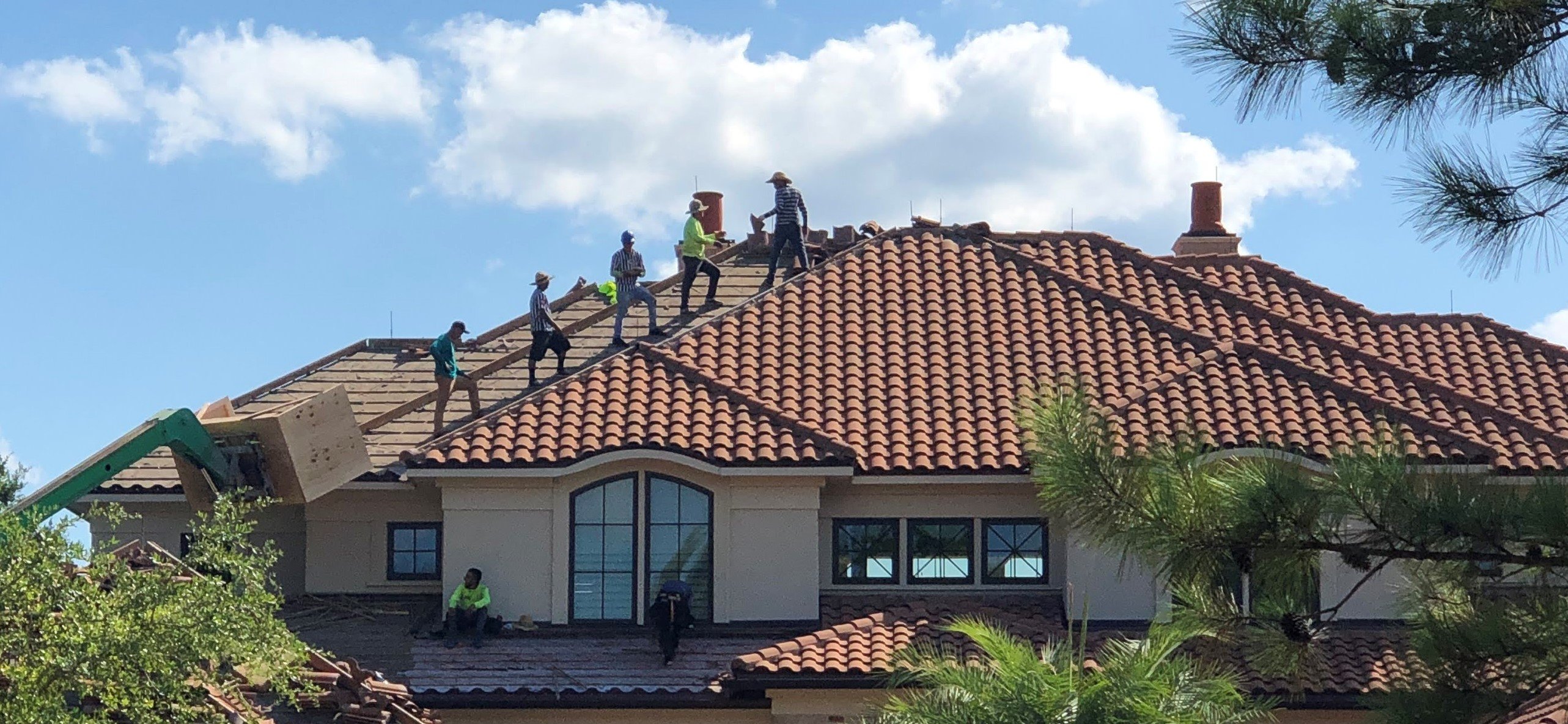Important Questions to Ask Gainesville Roofing Companies Before Employing
Important Questions to Ask Gainesville Roofing Companies Before Employing
Blog Article
Finest Practices for Ensuring Proper Roof Covering Ventilation
A well balanced consumption and exhaust vent proportion, frequently 1:300, plays an essential duty, with consumption vents preferably put at the lower edge of the roofing system for great air entry and exhaust vents at the height for cozy air exit. Maintaining insulation away from vents is important to avoid air flow restriction.
Understand Ventilation Fundamentals
Effectively comprehending air flow essentials is crucial for making certain the longevity and efficiency of roof covering systems. Effective ventilation alleviates moisture build-up and temperature extremes in the attic room, both of which can result in considerable architectural damage in time. A well-ventilated roof covering helps in avoiding common issues such as mold development, timber rot, and ice dams, which can compromise the honesty of the roof covering products and the underlying frameworks.
The primary goal of air flow is to assist in the movement of air, enabling a constant exchange in between the outdoor and interior settings. This equilibrium is attained through a combination of intake and exhaust vents that collaborate to maintain ideal air flow. Consumption vents, normally situated along the soffits or eaves, permit fresh air to enter the attic room area, while exhaust vents, typically located at or near the roofing system ridge, allow warm, damp air to leave.
Trick variables affecting the performance of roofing system air flow include proper placement, adequate sizing, and making certain that both consumption and exhaust vents are unblocked. Routine assessment and maintenance are crucial to identify prospective clogs, damage, or ineffectiveness in the air flow system, thus protecting the roofing's efficiency and durability.
Sorts Of Roof Covering Vents
Roofing vents play a crucial role in keeping efficient attic room air flow and, by extension, the total health and wellness of the roof covering system. Different types of roof vents are available, each with distinct advantages tailored to specific roof covering demands. Ridge vents, for example, are mounted along the roofing system's height, permitting warm, humid air to run away from the attic. They offer continuous ventilation and mix effortlessly with the roofline, making them both efficient and visually pleasing.

Soffit vents are set up under the eaves and operate in tandem with roofing vents to make certain a well balanced consumption and exhaust system. By allowing cooler air to go into from below, soffit vents promote the expulsion of hot air with upper vents. Gable vents, located on the outside walls of the attic room, deal an additional effective option, especially in homes with saddleback roofs.
Assess Your Existing Air Flow

Following, take into consideration the age and condition of your roof covering materials and ventilation parts. Older systems may not abide by existing building regulations or may have deteriorated in time, reducing their performance. Conduct a detailed exam to determine any indicators of damage, such as rust, damages, or voids that could jeopardize the system's performance.
Additionally, measure the attic temperature level and humidity levels. High temperature levels and humidity can show inadequate air flow.
Installation Best Practices
Efficient installment of roof air flow systems is extremely important for guaranteeing optimum efficiency and durability. Correct installment begins with understanding the certain air click here to read flow demands of the roof and the building it covers. This entails computing the right ratio of intake to tire vents, normally sticking to the 1:300 regulation, which specifies one square foot of air flow for every single 300 square feet of attic room floor room.

The placement of vents is just as crucial. Consumption vents ought to be mounted at the roof's reduced edge, usually in the soffits, to enable trendy air to enter. Exhaust vents, on the various other hand, ought to be set up near or at the roof covering's height to facilitate the departure of warm, damp air. This creates a natural air flow that aids maintain temperature level and wetness equilibrium within the attic room.
Seal all air vent connections carefully to stop air leakages and prospective water seepage. Usage premium products and comply with supplier standards to make certain longevity and effectiveness. In addition, integrating ridge vents with baffles can considerably enhance air movement effectiveness by stopping wind-driven rain and snow from entering the attic.
Eventually, precise installment of roof covering ventilation systems mitigates prospective issues such as mold and mildew growth, ice dams, and structural damage, guaranteeing the roof covering's stability and the building's overall wellness.
Routine Upkeep Tips
Consistency in maintenance practices is fundamental to making certain the long-term efficiency of roofing ventilation systems. Routine examinations are essential, ideally performed biannually-- in the springtime and fall. During these examinations, make certain that vents are cost-free of particles, nests, and various other obstructions that can hinder airflow. Look for any kind of indicators of wetness build-up or mold, as these can indicate inappropriate air flow or leaks (gainesville roofing companies).
Use a soft brush or a vacuum cleaner to eliminate dust and debris from intake and exhaust vents. Be cautious not to harm the air vent screens or louvers during the procedure.
Appropriate insulation is just as essential. Guarantee that attic room insulation does not block the vents, as this can drastically restrict air flow. Reposition or replace it to keep a reliable obstacle. if any insulation has moved or cleared up.
Lastly, replace any harmed or missing out on components immediately. Busted vents, broken roof shingles, or tatty flashing can all add to poor air flow and ought to be attended to immediately. Regular maintenance makes certain that the roof ventilation system works optimally, consequently expanding the life-span of the roofing itself.
Conclusion
Making certain correct roof covering ventilation is extremely important for preserving the efficiency and resilience of a roof covering system. Adherence to the 1:300 intake and exhaust air vent proportion, coupled with the critical placement of vents, is necessary.
A you can try these out balanced consumption and exhaust vent proportion, frequently 1:300, plays an essential duty, with intake vents preferably about his put at the lower edge of the roof covering for amazing air entry and exhaust vents at the optimal for warm air departure. Consumption vents, usually situated along the eaves or soffits, permit fresh air to get in the attic room, while exhaust vents, frequently situated at or near the roof covering ridge, allow warm, damp air to run away.
Soffit vents are set up under the eaves and job in tandem with roof vents to guarantee a well balanced intake and exhaust system. By enabling cooler air to go into from below, soffit vents help with the expulsion of hot air through upper vents. Adherence to the 1:300 intake and exhaust air vent proportion, paired with the strategic placement of vents, is vital.
Report this page